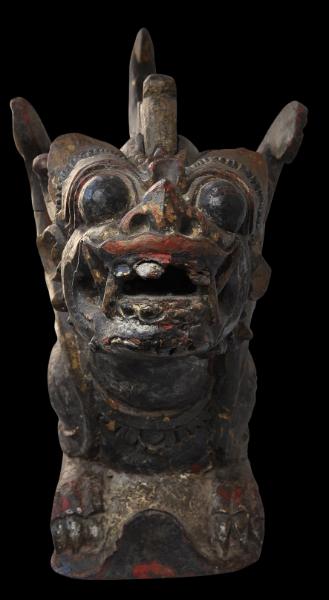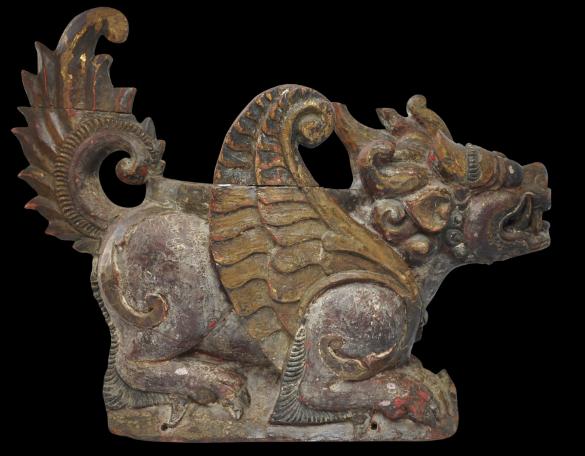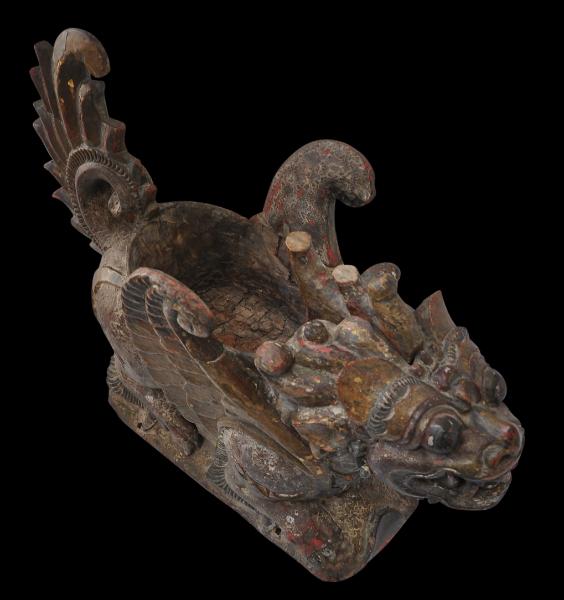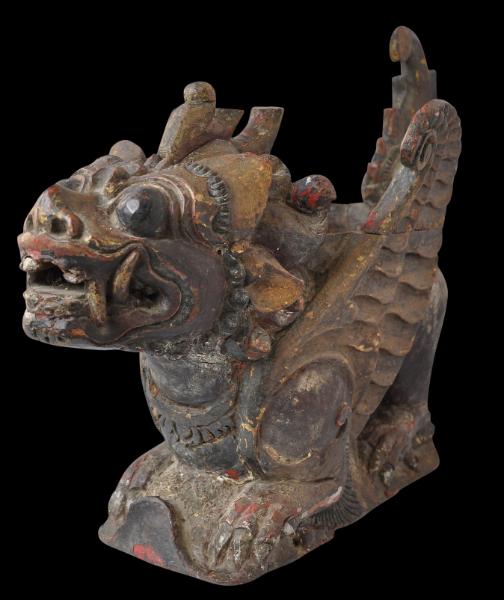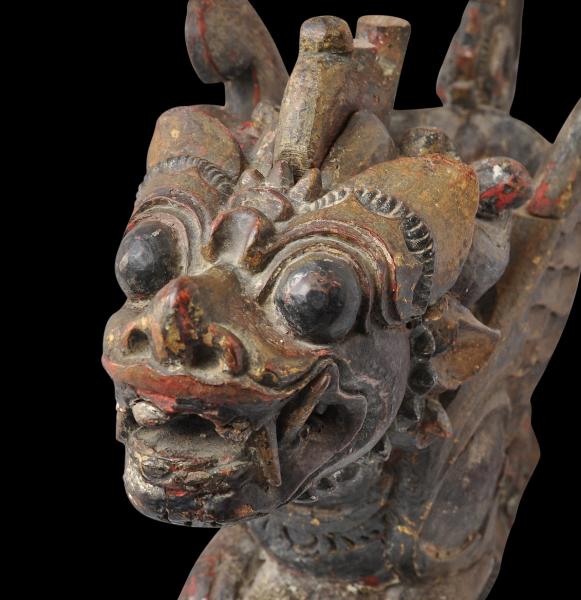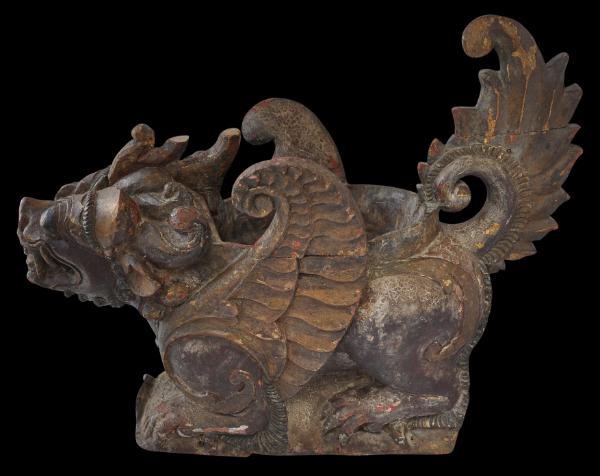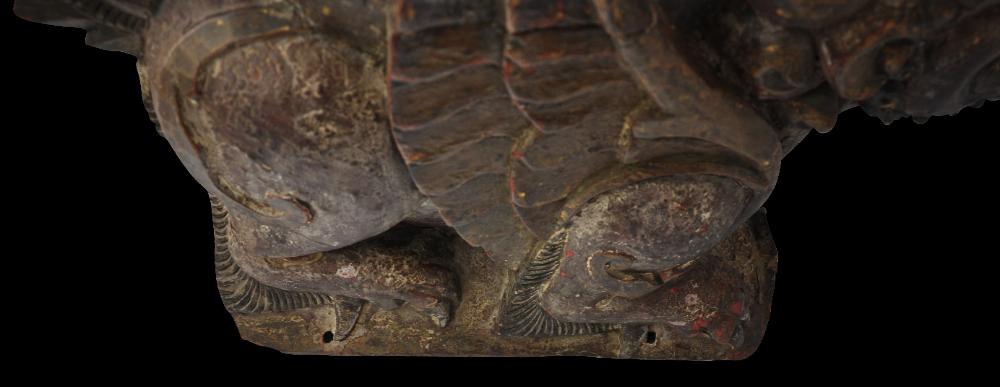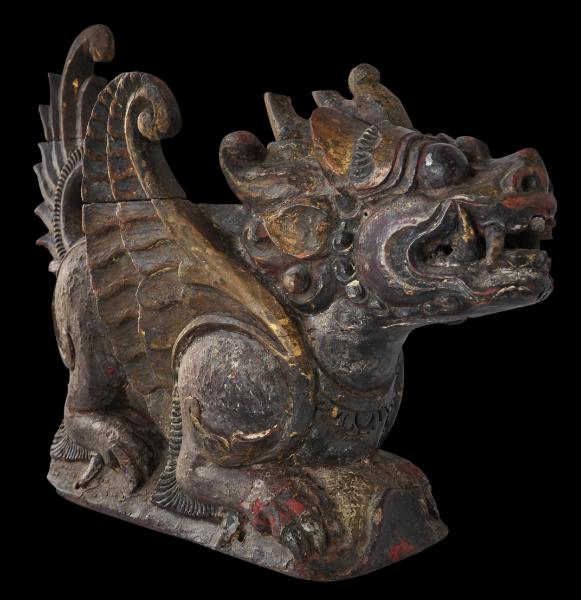
Balinese Wooden Ritual Box – Pratima/Pretima
Carved Wooden Ritual Storage Box (Pratima) in the Form of a Winged Lion (Singa)
Bali, Indonesia
19th century
length: 48cm, height: 37cm, width: 19.5cm
This carved, wooden ritual storage or offering box (pratima, sometimes spelled as pretima) is in the form of a Balinese mythical winged lion (singa). It is well carved with strong features. The singa’s head particularly is dynamic and vigorous in its rendering. Most probably it is from northern Bali. Its patina and style suggest a dating some time in the nineteenth century.
Such images were used as storage boxes for religious palm leaf manuscripts (
lontar) and, possibly in other instances, other items that were to be taken to the temple or to ceremonies to serve as offerings. Such items were kept in the cavity in the singa’s back. Most probably, this would have had a cover, although there is no evidence (such as a groove or indentation to allow a cover to be fitted) that there was such a cover.
Another possible use might have been as a
palinggih ida batara – a seat for a temple deity,
The
singa is shown seated on its haunches; its claws are large and powerful. It has a pair of wings carved to denote a feathered covering; a prominent, curled and flaming tail; and a mane. The mane and the top halves of the tail and wings are demountable. It’s mouth has fanged teeth and is hollow to the cavity in the singa’s back.Pratima usually were stored within wooden structures in larger temples and taken out during ceremonies. They were brought out of the temple for ritual processions when they and other ritual objects were carried to the sea or river for ‘cleansing’, a process known as melaspas.
The
pratima has four well-used holes drilled to the base. These allowed the pratima to be fixed to a board or dulang (a footed offering table) so that it would not fall off during a procession.
The
pratima has a well-encrusted patina and shows evidence of early repainting. The original natural pigments, gold leaf and cinnabar colouring are visible in parts. Two segments of the singa’s mane are missing, but otherwise the carving is intact. Importantly for an item of Balinese carved wood sculpture, the item is old and visibly so. A dating of at least the nineteenth century dating is highly plausible. An earlier dating is possible.
The item was acquired in the UK and most probably was part of an old collection. It appears to have been in the UK for many decades.
References
Bruce Carpenter, Bali, pers. comm.
Ramseyer, U., The Art and Culture of Bali, Oxford University Press, 1977.
Reichle, N. (ed.),
Bali: Art, Ritual & Performance, Asian Art Museum, 2010.
Provenance
UK art market
Inventory no.: 2007
SOLD

